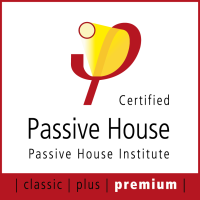This is an old revision of the document!
Table of Contents
Building Criteria:Overview of Changes
This page provides an overview of the changes to the building criteria. These are also described in the respective criteria document.
PHI Building Criteria: New with release of PHPP10
PHI Building Criteria: New with release of PHPP9
For almost 20 years, Passive House criteria have constituted guidelines for an excellent level of energy efficiency, cost-effectiveness and comfortable living conditions. To date, more than 1 million square metres of Passive House floor area has been certified through the quality assurance system set up in parallel. Through the course of time, these criteria have been carefully adapted and augmented several times in line with the experiences gained, albeit without any change to the basic principles. Thus, in 2010 the EnerPHit criteria were introduced for the modernisation of existing buildings using Passive House components. Another upgrade of the criteria takes effect with the release of the PHPP 9 in 2015. Of the extensive new criteria updates, the most important are described here:
Renewable primary energy (PER)
PHI has developed a new primary energy evaluation system which anticipates a future energy supply solely through renewable sources. This system has been adopted into the criteria and replaces the previous evaluation based on non-renewable primary energy (PE). For a transitional period, both the new and conventional methods may continue to be used optionally.
Classic, Plus and Premium Classes

 Depending on the level of the PER demand and generation of renewable energy, Passive House buildings and EnerPHit retrofits can be classified into one of three classes. A particularly low PER demand (achieved through efficient building services) and a high degree of renewable energy generation is necessary for the Premium class. Under the Classic class, the criteria correspond with those of the previous Standards. The requirements for heating and cooling demand remain the same for all classes.
Depending on the level of the PER demand and generation of renewable energy, Passive House buildings and EnerPHit retrofits can be classified into one of three classes. A particularly low PER demand (achieved through efficient building services) and a high degree of renewable energy generation is necessary for the Premium class. Under the Classic class, the criteria correspond with those of the previous Standards. The requirements for heating and cooling demand remain the same for all classes.
Globally applicable
Based on extensive scientific preliminary analyses, the criteria were adapted in such a way that they can now be applied without any restrictions in all climates globally for all energy standards and building types (i.e. for Passive House, EnerPHit and Low Energy Building Standards, including residential and non-residential buildings).
Three become one
The PHI building criteria which previously consisted of three documents (PH residential buildings, PH non-residential buildings, EnerPHit) have been combined into one document. In the process they have been completely revised and clearly restructured. The previous external document for the so-called “soft criteria” is now obsolete. These requirements have been more precisely defined and integrated into the actual criteria.
The PHI Low Energy Building
 A new Standard referred to as the PHI Low Energy Building has been added to the PHI building criteria. The requirements for this are slightly less stringent than those for a Passive House. This Standard is aimed at buildings with difficult basic prerequisites such as extremely small detached houses in strongly shaded situations. Another application is for buildings which narrowly miss the Passive House Standard on account of unplanned deviations in construction, e.g. airtightness level not meeting the requirements.
A new Standard referred to as the PHI Low Energy Building has been added to the PHI building criteria. The requirements for this are slightly less stringent than those for a Passive House. This Standard is aimed at buildings with difficult basic prerequisites such as extremely small detached houses in strongly shaded situations. Another application is for buildings which narrowly miss the Passive House Standard on account of unplanned deviations in construction, e.g. airtightness level not meeting the requirements.
Coming into effect
Energy related building planning and proof of compliance with the criteria will take place as usual using the Passive House Planning Package (PHPP). The criteria have already been integrated into the German and English version of the PHPP 9. Other languages will follow subsequently. The new criteria will come into effect with the release of the PHPP 9 in the specific user language.
PHI Building Criteria_New with release of PHPP9
